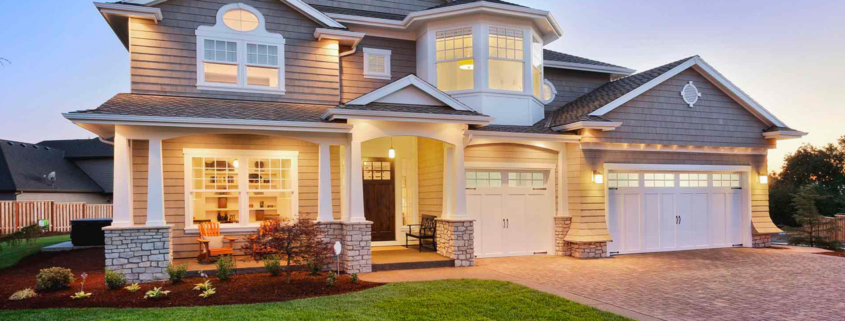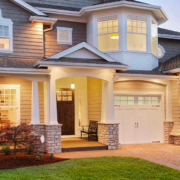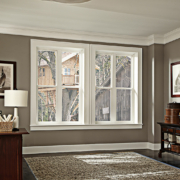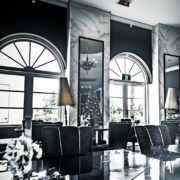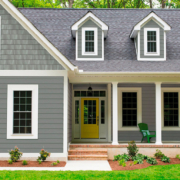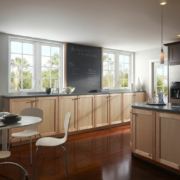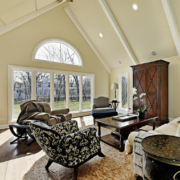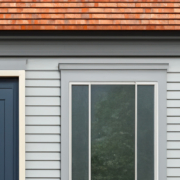Bay or Bow: The Guide to Choosing the Perfect Window Style
Bay and bow windows have been popular architectural designs for centuries, and for a good reason, They offer a unique aesthetic appeal, increased natural light, and extra living space. Here is everything you need to know about bay and bow windows, including their differences, benefits, and how to choose the right one for your home.
What Are Bay Windows?
Bay windows are a type of window that protrudes from the exterior wall of a building, forming an alcove or bay. They typically have three sides, with the center window being larger than the two side windows. Bay windows are often used to create a cozy nook, add extra seating or storage space, or even increase the amount of natural light that enters a room. They are popular for living rooms, dining rooms, and bedrooms.
History of Bay Windows
Bay windows have been around for centuries and were popularized during the Gothic and Renaissance periods. They were often used in castles and palaces to provide more light and a better view of the surrounding landscape.
In the 18th and 19th centuries, bay windows became more popular in residential homes. They were used in Victorian and Edwardian houses to create a sense of grandeur and to provide more natural light.
Different Types of Bay Windows
There are several different types of bay windows, each with its unique design and structure. Here are the most common types of bay windows.
Box Bay Windows
Box bay windows are the most common type of bay window. They are typically made up of three windows, with the center window larger than the two side windows. Box bay windows are generally square or rectangular and are often used in modern homes.
Oriel Bay Windows
Oriel bay windows are a type of bay window supported by brackets or corbels. They are typically found in Tudor-style homes and are known for their intricate designs.
Bow Bay Windows
Bow bay windows are a type of bay window that is curved instead of angular. They are typically made up of four or more windows and are often used in Victorian and Edwardian homes.
Circle Bay Windows
Circle bay windows are a type of bay window that is circular. They are typically used in modern homes and provide a unique architectural feature to the exterior of a building.
What Are Bow Windows?
Bow windows are similar to bay windows in that they also protrude from the exterior wall of a building. However, bow windows have four or more sides, giving them a curved appearance. They are often used to create a panoramic view, add extra living space, or create a focal point in a room. Bow windows are typically found in more formal settings, such as dining rooms and living rooms, but they can also be used in bedrooms and other home areas.
History of Bow Windows
Bow windows have been a popular architectural feature in Europe for centuries. They were first used in the Georgian period of English architecture, which spanned from 1714 to 1830. During this time, bow windows were typically constructed from timber and featured a curved design often adorned with ornate carvings and details.
In the United States, bow windows became popular during the Victorian era, which lasted from 1837 to 1901. During this time, bow windows were typically made from wood or cast iron and featured intricate details and decorative elements. They were often used in high-end homes and buildings like museums, libraries, and government buildings.
Today, bow windows are still a popular architectural feature in both residential and commercial buildings. They are typically made from materials such as wood, vinyl, or aluminum and can be customized to fit the unique style and design of a home or building.
Different Types of Bow Windows
Here are the most common types of bow windows.
Traditional Bow Windows
Traditional bow windows are the most common type of bow windows that you will find in homes. They are typically made up of four or five window panels set at equal angles to create a curve. Traditional bow windows are usually installed in a large opening in the wall, and they can be made from various materials, including wood, vinyl, and aluminum.
Circle Top Bow Windows
Circle-top bow windows are a unique type designed to create a circular shape. They are typically made up of four or five window panels set at equal angles to create a curve, and the top panel is shaped like a half-circle. Circle-top bow windows are usually installed in a large opening in the wall, and they can be made from various materials.
Elliptical Bow Windows
Elliptical bow windows are similar to circle-top bow windows but are designed to create an elliptical shape instead of a circular one. They are typically made up of four or five window panels set at equal angles to create a curve, and the top panel is shaped like an ellipse. Elliptical bow windows are usually installed in a large opening in the wall, and they can be made from various materials.
Wraparound Bow Windows
Wraparound bow windows are a type of bow window that is designed to wrap around a corner of a room. They are typically made up of four or five window panels set at equal angles to create a curve and installed in the corner of the room. Wraparound bow windows can be made from various materials, including wood, vinyl, and aluminum.
Differences Between Bay and Bow Windows
The main difference between bay and bow windows is their shape. Bay windows have three sides and a flat front, while bow windows have four or more sides and a curved appearance. Bay windows are typically more angular and have a sharper corners, while bow windows have a softer, more curved appearance. Bay windows are better suited for smaller spaces, while bow windows are better suited for larger spaces.
Size Differences
One of the most significant differences between bay and bow windows is their size. Bay windows typically have a larger center window flanked by two smaller windows. The smaller windows are typically fixed or stationary, while the center window is often operable.
On the other hand, Bow windows are made up of multiple windows, usually four or more. This gives bow windows a much larger overall size than bay windows.
Shape and Appearance
Another significant difference between bay and bow windows is their shape and appearance. Bay windows are more angular, typically with a 90-degree angle between the center window and the two smaller windows. This creates a sharp, geometric appearance that can add a modern touch to a home’s exterior.
Bow windows have a more rounded appearance thanks to their gently curved design. This gives bow windows a softer, more elegant appearance that can add a touch of sophistication to a home’s exterior.
Installation Differences
Bay and bow windows also differ in their installation. Bay windows are typically installed in a rectangular opening in the wall, while bow windows require a more complex installation process. Bow windows are made up of multiple windows connected by a custom-made frame. This frame must be carefully installed to ensure the windows are properly aligned and sealed.
Functionality
Lastly, bay and bow windows differ in their functionality. Bay windows typically have one operable window, usually the center window, while the two smaller windows are fixed or stationary. This limits the amount of ventilation that bay windows can provide. On the other hand, Bow windows are made up of multiple operable windows, allowing for increased ventilation and airflow.
Benefits of Bay and Bow Windows
Bay and bow windows offer several benefits for homeowners. Here are the most common benefits of bay and bow windows.
Enhanced Curb Appeal
Bay and bow windows are an excellent way to boost your home’s curb appeal. These windows create a unique and eye-catching feature that can make your home stand out from the rest. The design of these windows adds depth and dimension to your house’s facade. Additionally, bay and bow windows come in various styles, finishes, and colors that can complement any architectural style.
Improved Natural Light
Another benefit of bay and bow windows is that they allow more natural light into your home. Because of their unique shape, these windows capture light from different angles, providing ample sunlight throughout the day. This can be particularly beneficial in areas of your home that are naturally dark or have limited windows. With bay and bow windows, you can enjoy a brighter, more inviting space.
Increased Ventilation
Bay and bow windows also offer better ventilation than traditional windows. Because of their size and design, these windows can be opened in various ways to allow more air into your home. This can be particularly beneficial when you want to keep your home cool and comfortable during the summer months. You can enjoy a refreshing breeze without air conditioning with bay and bow windows.
Expanded Living Space
Another advantage of bay and bow windows is that they can expand your living space. These windows create a nook or alcove that can be used for various purposes. You can use this space as a reading nook, a window seat, or a mini-office. This can be particularly beneficial if you have a small home or want to create a cozy, intimate space within a larger room.
Energy Efficiency
Bay and bow windows are also energy-efficient. These windows are designed to be airtight, which means they can reduce the amount of heat that escapes your home during the winter months. Additionally, the natural light these windows provide can reduce the amount of artificial lighting you need to use, lowering your energy bills. This makes bay and bow windows an excellent investment for homeowners who want to reduce their carbon footprint and save money on utility bills.
Increased Home Value
Finally, bay and bow windows can increase the value of your home. These unique and attractive windows make your home more appealing to potential buyers. These windows’ added living space and improved natural light could also be a significant selling point. This makes bay and bow windows an excellent investment for homeowners who want to increase the resale value of their homes.
How to Choose the Right Bay or Bow Window for Your Home
When choosing a bay or bow window for your home, several factors must be considered. These include the size and shape of the window, the materials used, and the overall style of your home.
Size and Shape
The size and shape of the window will depend on the size of your room and the amount of natural light you want to let in. Bay windows are typically better suited for smaller spaces, while bow windows are better suited for larger spaces.
Materials
Bay and bow windows can be made from various materials, including wood, vinyl, and aluminum. Wood is popular for its natural beauty and durability, while vinyl and aluminum are more affordable options requiring less maintenance.
Style
The style of your bay or bow window should complement the overall style of your home. A wood bay or bow window may be the best choice if you have a traditional house. A vinyl or aluminum window may be a better fit if you have a more modern home.
Installation
Bay and bow windows require professional installation to ensure proper fit and sealing. Choosing a reputable window installation company with experience installing bay and bow windows is important.
Cost
The bay and bow windows cost can vary depending on the materials used, size, and installation costs. It is important to get multiple quotes from different window installation companies to compare costs and ensure you are getting a fair price.
Conclusion
Bay and bow windows may have significant differences, but they share many benefits for homeowners. By understanding the differences between these two window styles and considering factors such as size, materials, style, installation, and cost, you can choose the right bay or bow window for your home and enjoy all the benefits they offer.
Transform your home with the stunning beauty and energy efficiency of bow windows! America’s Triple Pane Company, WDUSA of Louisville, KY, is your go-to source for high-quality, affordable bow windows that will enhance your home’s look and function. Contact us today!

